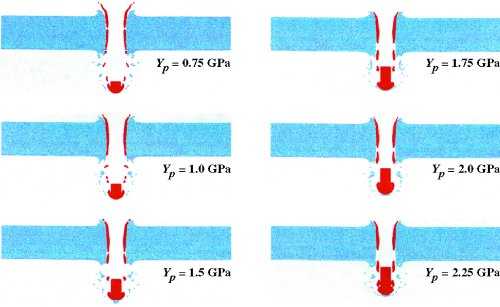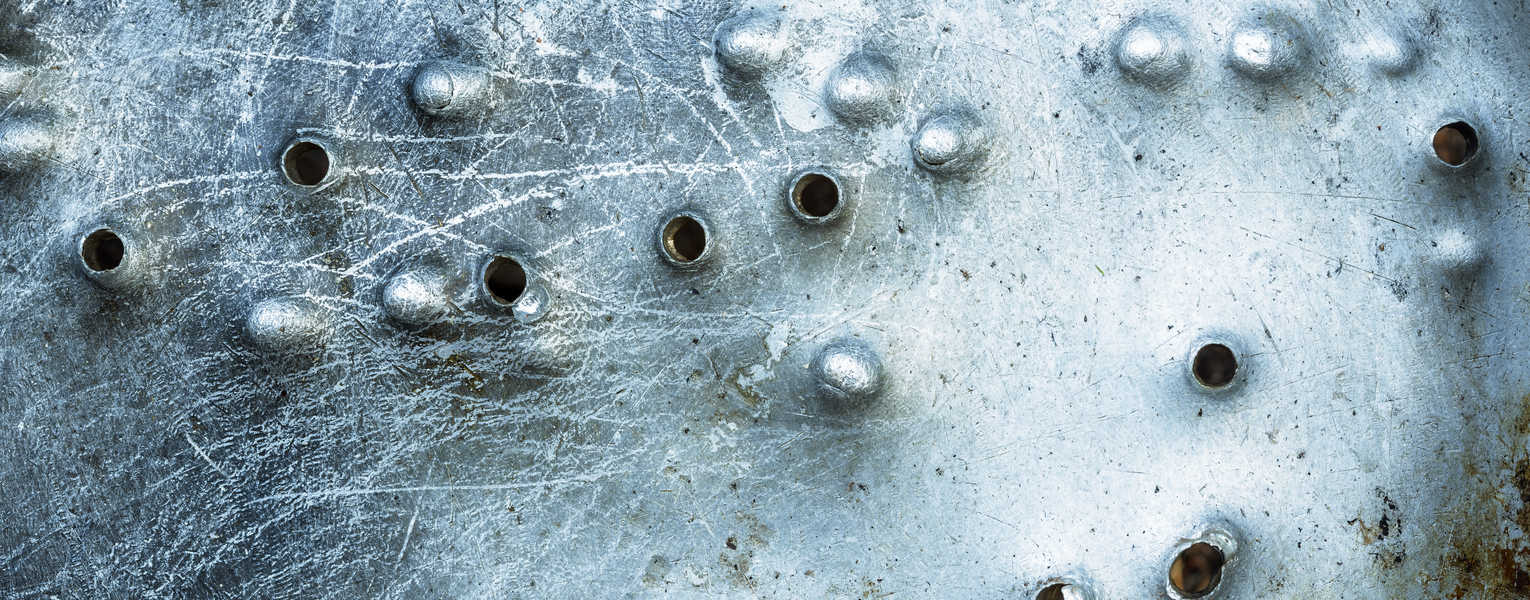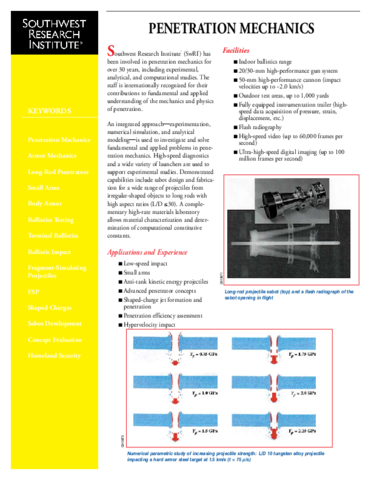The penetration mechanics staff is internationally recognized for contributions to fundamental and applied understanding of the mechanics and physics of penetration.
High-speed diagnostics and a wide variety of launchers are used to support experimental studies. Demonstrated capabilities include sabot design and fabrication for a wide range of projectiles from irregular-shaped objects to long rods with high aspect ratios (L/D < 30). A complementary high-rate materials laboratory enables material characterization and determination of computational constitutive constants.
Penetration Mechanics Applications and Experience
- Low-speed impact
- Small arms
- Anti-tank kinetic energy projectiles
- Advanced penetrator concepts
- Shaped-charge jet formation and penetration
- Penetration efficiency assessment
- Hypervelocity impact
Penetration Mechanics Facilities
- Indoor ballistics range
- 20/30-mm high-performance gun system
- 50-mm high-performance cannon (impact velocities up to ~2.0 km/s)
- Outdoor test areas, up to 1,000 yards
- Fully equipped instrumentation trailer (high-speed data acquisition of pressure, strain, displacement, etc.)
- Flash radiography
- High-speed video (up to 60,000 frames per second)
- Ultra-high-speed digital imaging (up to 100 million frames per second)
 Numerical parametric study of increasing projectile strength: L/D 10 tungsten alloy projectile impacting a hard armor steel target at 1.5 km/s (t = 75 µs)
Numerical parametric study of increasing projectile strength: L/D 10 tungsten alloy projectile impacting a hard armor steel target at 1.5 km/s (t = 75 µs)


